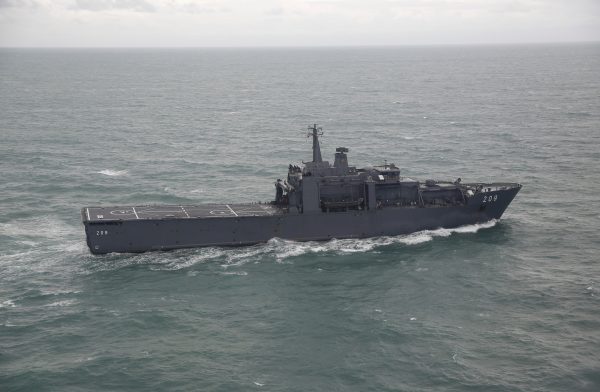But Singapore’s security situation has evolved since the 1970s. The current US–China rivalry over trade and security has implications for Southeast Asia in general and Singapore in particular. The increasing tension between the two great powers over the South China Sea could lead to military conflict, particularly given China’s increasing confidence in confronting US warships conducting freedom of navigation operations. This tension threatens Singapore’s sea lines of communication. Closer to home, the maritime territorial dispute with Malaysia in late 2018 emphasised the need for a capable navy to protect Singapore’s maritime interests and sovereignty.
Nearly five decades ago, there were two reasons for Singapore to adopt a forward defence strategy. There was the need to secure its water supply that originated in the southern Malaysian state of Johore in the event of military conflict with its northern neighbour. Moreover, Singapore’s small physical size meant the country lacked the strategic depth for a successful defence. Archival documents reveal that the Singapore Armed Forces (SAF) placed emphasis on arming its ground forces to be capable of successfully occupying the southern part of the Malaysian Peninsula. Data from the Stockholm International Peace Research Institute and archival documents reveal Singapore procured more than 1000 tanks and armoured vehicles between the 1960s and 1970s.
The forward defence strategy has now shifted focus to the maritime domain. In its early years, the Republic of Singapore Navy (RSN) was equipped to serve only constabulary duties. Throughout the 1970s and 1980s, the RSN was equipped to handle surface and air threats. But the introduction of the Victory-class missile corvettes in the 1990s was a game-changer. These warships expanded the RSN’s capabilities to deal with sub-surface threats from submarines and protect Singapore’s sea lines of communication.
In recent years, the RSN set up a plan for its assets to meet these two objectives with less manpower. The plan emphasises the ability to operate further and for longer at sea while remaining well equipped to deal with a wider range of operational requirements.
The RSN’s new Independence-class warships require a smaller crew and can operate for up to 3500 nautical miles — nearly twice that of their Fearless-class predecessors. They are also packed with a wider range of lethal and non-lethal armaments. Below the surface, new Type 218SG submarines that are custom made to operate better in saltier Singapore waters have 50 per cent more endurance and a bigger payload capacity compared to the current submarine fleet.
The Victory-class missile corvettes and Endurance-class landing ship tanks (LSTs) will be replaced by multi-role combat vessels (MRCVs) and joint multi-mission ships (JMMS), respectively. Details of the JMMS are currently sketchy, but they will reportedly have double the capacity of the current LSTs. Critically, they are likely to have straight-through flight decks that are suitable for the short take-off vertical landing F-35B fighter jets that Singapore is procuring from the United States. Having several JMMS capable of hosting the F-35Bs will allow the SAF to disperse and protect its warplanes from surprise enemy attacks on its airbases. The JMMS will also augment the SAF’s amphibious capabilities.
The SAF’s current military airbases are located close to neighbouring states. For example, Tengah airbase is located only 6 kilometres from Malaysia and is vulnerable to attacks by swarms of drones, missiles or artillery fire. The successful attack on a Saudi Arabian oilfield by 18 drones in September 2019 highlights the vulnerability of Singapore’s airbases.
But utilising the JMMS as a mobile airbase requires protection from air, surface and sub-surface threats. The RSN’s current Formidable-class frigates might not be able to sustain saturated attacks from the air. This is where the MRCVs could function as a defensive shield for the JMMS. In providing area defence, the MRCVs could be better armed than the current Formidable-class frigates to meet aerial threats.
While it is likely that the JMMS have been conceived to deal with humanitarian assistance and disaster relief, it is also unlikely that Singapore spent scarce resources developing military capabilities for non-military operations alone. The concept of ‘value for money’ — developing capabilities able to serve several purposes — is ingrained within Singapore’s public service procurement culture. Beyond humanitarian and disaster relief missions, the JMMS will likely be developed to serve in low- and high-intensity conflicts too.
Building up Singapore’s naval capabilities ensures the city-state maintains its military edge in Southeast Asia, including the capabilities to deal with threats within and beyond its immediate neighbourhood.
Abdul Rahman Yaacob is a PhD candidate at the National Security College, The Australian National University.

